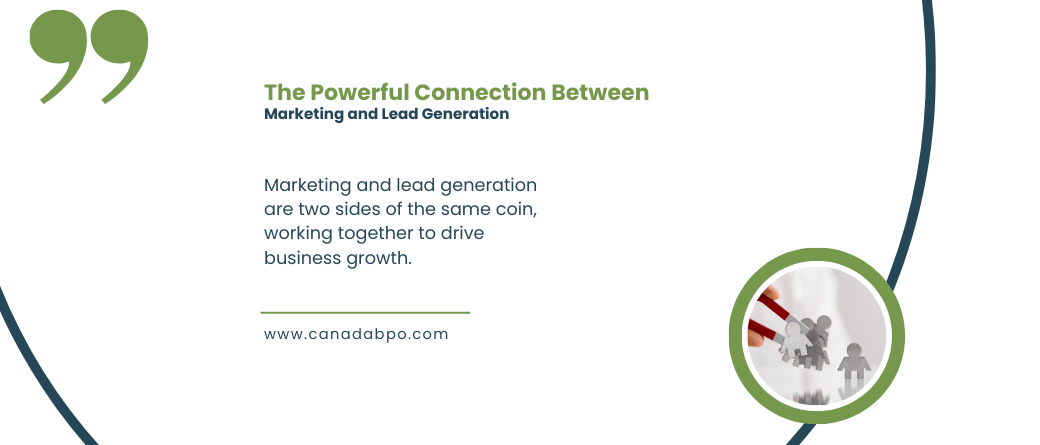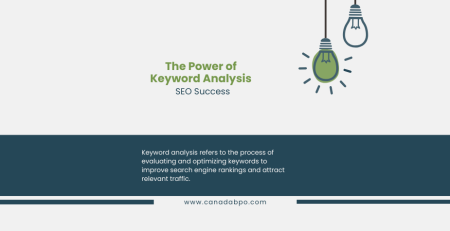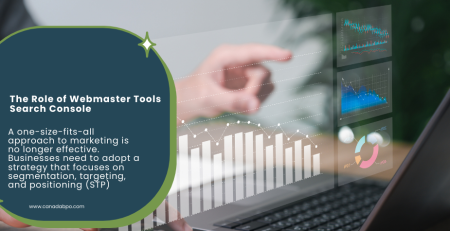Marketing and lead generation are two sides of the same coin, working together to drive business growth. While marketing focuses on creating awareness and interest in your brand, lead generation aims to convert that interest into actionable leads. In this blog post, we’ll explore the relationship between marketing and lead generation, and how you can align both strategies to maximize results.
Understanding the Difference Between Marketing and Lead Generation
In this section, we’ll differentiate marketing and lead generation, defining their roles in business growth:
- Marketing:
- Definition: Marketing encompasses a wide range of activities aimed at promoting products or services, building brand awareness, and engaging with target audiences. It includes tactics such as content marketing, social media marketing, SEO, email marketing, and advertising.
- Objective: To attract potential customers, educate them about your offerings, and create interest in your brand.
- Lead Generation:
- Definition: Lead generation is a subset of marketing that focuses on capturing interest in a product or service and converting that interest into qualified leads. It involves gathering contact information from prospects and nurturing them through the sales funnel.
- Objective: To generate high-quality leads that can be converted into paying customers by the sales team.
The Synergy Between Marketing and Lead Generation
Marketing and lead generation are interdependent, each reinforcing the other. Here’s how they work together:
- Brand Awareness Leads to Lead Generation:
- Impact: Marketing activities, such as content creation and social media engagement, build brand awareness. This awareness is a key driver for lead generation, as prospects who recognize and trust your brand are more likely to engage and provide their contact information.
- Example: A well-executed content marketing strategy can educate potential customers and pique their interest, leading them to sign up for a newsletter or download a free guide, thus becoming a lead.
- Lead Generation Informs Marketing:
- Impact: Lead generation efforts provide valuable data about your audience, including demographics, preferences, and pain points. This information can be used to refine your marketing strategies, ensuring that your content and messaging resonate with your target audience.
- Example: Analyzing the performance of your lead magnets can help you identify which topics and formats are most effective, allowing you to focus your marketing efforts on high-converting content.
Essential Tactics for Marketing and Lead Generation Success
This section covers key strategies and tactics that align marketing and lead generation efforts:
- Content Marketing:
- Importance: High-quality content is a cornerstone of both marketing and lead generation. Blog posts, videos, and infographics educate your audience and drive traffic, while lead magnets such as eBooks and webinars capture lead information.
- Best Practices: Create content that addresses your audience’s pain points, offers solutions, and positions your brand as an expert in your field.
- Social Media Marketing:
- Importance: Social media platforms are powerful tools for both brand awareness and lead generation. Engaging content can drive traffic to your website, while targeted ads can promote lead magnets and capture contact information.
- Best Practices: Use social media to interact with your audience, share valuable content, and run paid campaigns that target your ideal customers.
- SEO and Organic Traffic:
- Importance: Search engine optimization (SEO) helps your content rank higher in search results, increasing visibility and attracting potential leads. By optimizing your website for relevant keywords, you can drive organic traffic that can be converted into leads.
- Best Practices: Conduct keyword research to identify terms your target audience is searching for, and optimize your website and content to rank for those keywords.
- Email Marketing:
- Importance: Email marketing is a powerful tool for nurturing leads through personalized content and offers. By sending targeted emails, you can move leads through the sales funnel and convert them into customers.
- Best Practices: Segment your email list based on lead behavior and preferences, and use automation to deliver timely and relevant messages.
- PPC Advertising:
- Importance: Pay-per-click (PPC) advertising allows you to target specific audiences with ads that drive traffic to your lead generation forms. By bidding on relevant keywords, you can reach potential customers who are actively searching for solutions like yours.
- Best Practices: Optimize your landing pages to maximize conversions, and use A/B testing to refine your ads for better performance.
Measuring the Success of Your Marketing and Lead Generation Efforts
In this section, we’ll discuss the metrics and tools to track the effectiveness of your strategies:
- Key Metrics:
- Conversion Rate: The percentage of website visitors or ad clicks that convert into leads.
- Cost Per Lead (CPL): The average cost of acquiring a lead through your marketing efforts.
- Lead Quality: Assessing the relevance and potential of leads to convert into paying customers.
- Tools for Measurement:
- Google Analytics: Track website traffic, user behavior, and conversion rates.
- Marketing Automation Software: Manage your lead generation efforts and track engagement across multiple channels.
- CRM Systems: Store and analyze lead information, and monitor their journey through the sales funnel.
- Optimization Techniques:
- A/B Testing: Test different versions of your landing pages, ads, and email campaigns to identify what resonates best with your audience.
- Data-Driven Decisions: Use data from your lead generation efforts to inform your marketing strategy, ensuring continuous improvement.
Best Practices for Aligning Marketing and Lead Generation
To ensure your marketing and lead generation efforts are aligned, consider these best practices:
- Create Consistent Messaging: Ensure that your brand message is consistent across all marketing channels, from social media posts to email campaigns. This builds trust and familiarity with your audience, making them more likely to convert into leads.
- Focus on Value: Always provide value to your audience, whether through educational content, special offers, or personalized recommendations. This value-driven approach helps build relationships with potential leads.
- Leverage Automation: Marketing automation tools can streamline lead generation processes, from capturing leads on your website to nurturing them through email sequences. Automation saves time and ensures that no leads fall through the cracks.
- Regularly Review and Adjust: Continuously evaluate the performance of your marketing and lead generation efforts, and be prepared to make adjustments as needed. Staying agile allows you to respond to changes in the market and your audience’s needs.
Marketing and lead generation are closely intertwined, with each supporting the other to drive business growth. By aligning your strategies, focusing on value, and continuously optimizing your efforts, you can create a powerful lead generation engine that fuels your success. Whether you’re just starting or looking to improve your current efforts, integrating marketing and lead generation is key to achieving your business goals.
Ready to supercharge your marketing and lead generation efforts? Contact us today to learn how we can help you create a strategy that drives results and grows your business.










